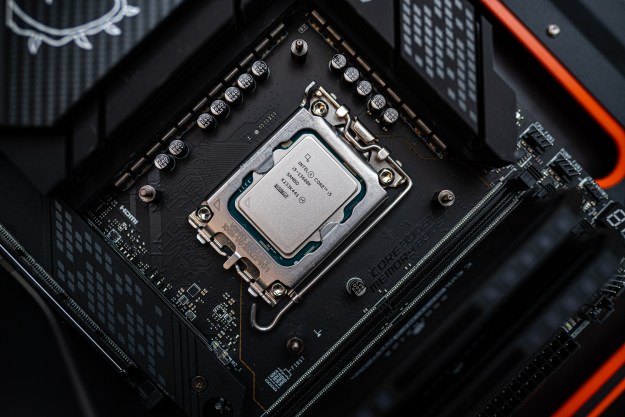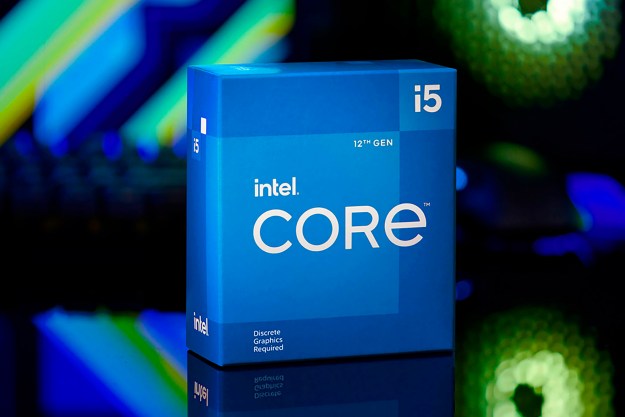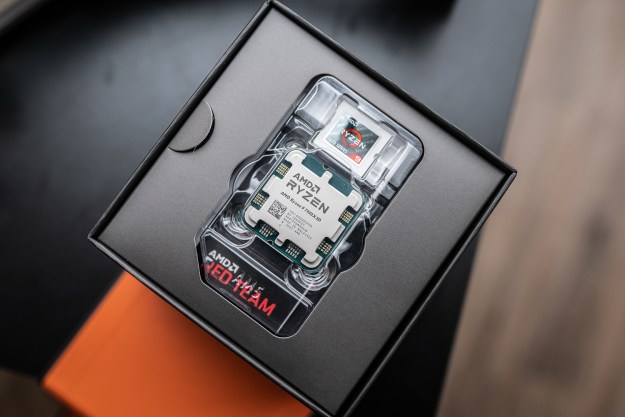Computers are constantly being made smaller, so it’s no surprise that today you can buy a reasonably powerful computer in something the size of a USB stick. While the likes of ASUS and Zotac have released stick PCs with Intel Atom CPUs, Intel itself has now shown off a similarly sized device that comes packing the power of a Core M Skylake CPU.
There will be three different models of the stick at launch, all with long, number designations that makes naming the individual sticks rather difficult. The STKMV64CC will come with the Core M5-6Y57 vPRO processor inside, while the other STKM3W64CC and STKM364VCC will have the M-6Y30s under the hood.
Regardless of which one you pick, the performance should be much higher than we saw with the first generation models of these compute sticks which debuted last year.
While the CPU alone in such a small package is impressive, the rest of the specifications aren’t exactly lax. Backing up the powerful new CPUs is 4GB of RAM and 64GB of flash storage space. For connectivity, the sticks sport a USB 3.0 connector, plus Bluetooth 4.0 and dual-band 802.11ac Wi-Fi. Intel has also crammed two more USB ports on the device’s power brick in an attempt to expand connectivity without making the Compute Stick bigger.
In terms of physical dimensions, all of that power and connectivity is crammed into a stick that is just 4.5 inches by 1.5 inches, and just half an inch thick. It’s a little bit bigger than the original Compute Sticks (as per Liliputing) but at these sorts of sizes, that extra few millimetres of hardware isn’t going to make a massive difference.
The M3 model will come with Windows 10 or with no system at all depending on buyer preference. All of the new Sticks will support Windows or Linux operating systems. Pricing is $400 or $500, respectively, with availability in February.
While the Core M sticks are the most interesting product in terms of performance, Intel hasn’t ignored the Atom model. It has been updated with a new exterior design to match the Core M versions, and now has the latest “Cherry Trail” version of Atom hardware.
The only model available has an Atom x5-Z8300 quad-core processor, 2GB of RAM, and 32GB of storage. Wi-Fi has been improved to a 2×2 802.11ac adapter, and Bluetooth 4.0 remains standard. There’s now two USB ports, one of which is 3.0. That’s one extra compared to the original Compute Stick.
Pricing for the new Atom model is $160, and it comes with Windows. Sorry, Linux fans — that version was not selling well, so it has been axed. Intel did say it plans to sell a version without any OS, but it’s not clear what its price will be, or when it will be available.
Editors' Recommendations
- Gamers are reportedly returning Intel Core i9 CPUs in droves
- Intel’s CPUs just got way more confusing
- Confused about Core Ultra? We were too, so we asked Intel about it
- Here’s how the M3 Max chip compares to the most powerful Windows laptops
- Apple’s M3 Max appears to keep up with Intel’s top desktop CPU




